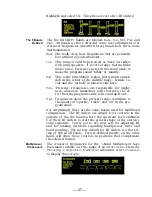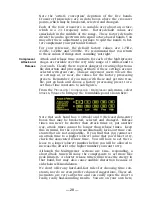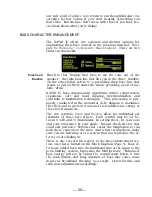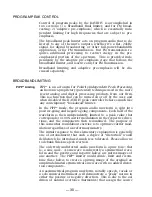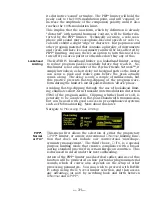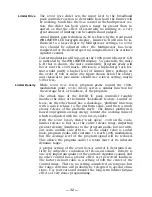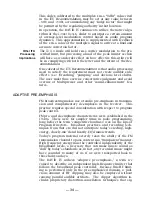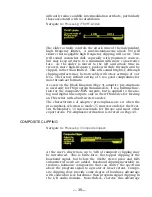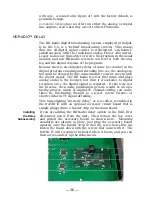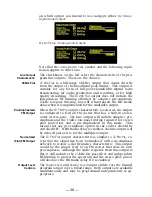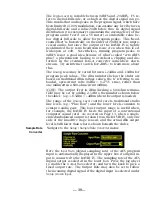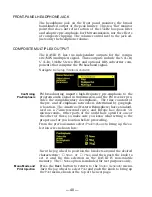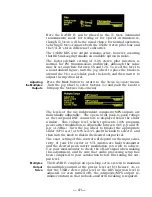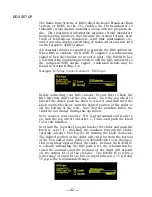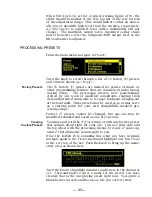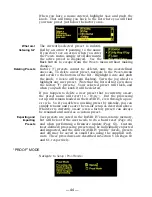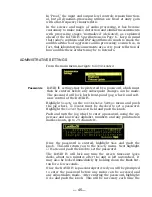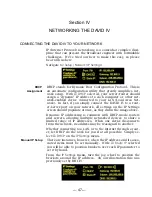
— 33 —
MULTIPLEX POWER CONTROL (BS.412-9)
The ITU
‘Recommen-
dation’
In 1998, the International Telecommunication Union (ITU), a
key European standards organization, published their
Recom-
mendation ITU-R BS.412-9
, the culmination of several years’
work to study and mitigate interference between broadcast sta-
tions on the crowded European VHF-FM band.
Channel spacing, transmitter power and other assigned consid-
erations were major factors in this study, but insofar as audio
processing is concerned, the short version is that the ITU found
direct correlation between FM carrier modulation and audible
interference between stations on adjacent frequencies. What’s
more, it further found that
modulation density
was in large part
responsible for this interference. In other words, not necessari-
ly the absolute
peak
deviation of the carrier but the
r.m.s. pow-
er
of the modulating program signal integrated over a specified
period of time.
The ITU
Recommendation
specifies the r.m.s. power of the
composite-multiplex signal (including the stereo pilot and any
audio (SCA) or data subcarriers), as measured and integrated in
a ‘floating’ 1-minute measurement window. It states that this
value should not exceed the r.m.s. power of a single-tone sine
wave modulated with a peak deviation of ±19kHz.
Now, ±19kHz is just about 12dB below the ±75kHz peak devia-
tion limit. This implies an average-to-peak ratio of the program
signal that, by contemporary broadcasting standards, gives a
rather pathetic showing… certainly not the in-your-face, highly-
compressed dynamics that Program Directors have come to
know and love(!) since the mid-1960s!
The ITU
Recommendation
has been mandatory in Germany,
Austria and Switzerland since 2004, but with some latitude.
Germany adheres to the letter of the
Recommendation
, “0dBr”
they call it. But Austria and Switzerland are able to exceed that
point by 3dB. In other words, their r.m.s. modulation is permit-
ted to go to “+3dBr.”
The DAVID IV provides compliance to the ITU standard by re-
defining the peak-limiting processing function when the
ITU
option is selected.
First, the PIPP* limiter is defeated in favor of more conservative
symmetrical peak control. Secondly, the
Limiter Drive
and
Limiter
Density
sliders are re-scaled for less-aggressive overall pro-
cessing. The
Limiter Density
slider is, in fact, renamed in the
ITU
mode, becoming the
dBr BS.412-9
slider shown above.
Summary of Contents for 719
Page 1: ...DAVID IV FM Audio Broadcast Processor Installation User Guide www inovonicsbroadcast com ...
Page 2: ......
Page 4: ......
Page 70: ... 66 NOTES AND DOODLES ...









